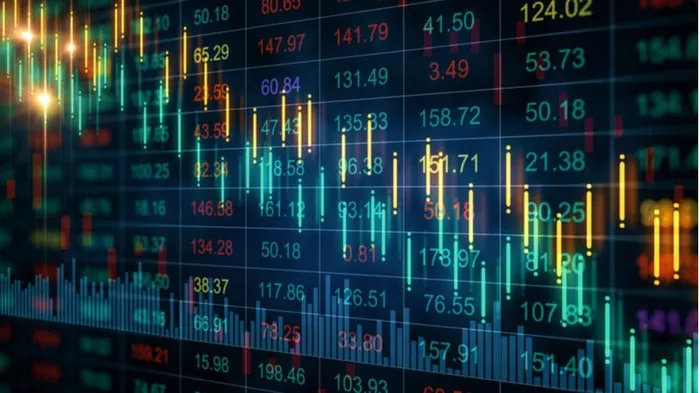Embarking on the journey of futures trading requires a strategic approach and a deep understanding of the market dynamics. Futures, as financial instruments, offer ample opportunities for profit, but navigating this complex landscape necessitates a well-thought-out plan. In this article, we will explore the best ways to trade futures, examining key strategies, risk management techniques, and the tools necessary to thrive in this dynamic market.
Choosing the Right Futures Contracts
The first step in successful futures trading is selecting the right contracts for your investment goals and risk tolerance. Futures contracts are available across various asset classes, including commodities, currencies, indices, and interest rates. Each market has its unique characteristics and influences, so it’s crucial to choose instruments that align with your expertise and trading objectives. Diversifying across different futures contracts can help spread risk and optimize your overall portfolio performance.
Understanding Market Trends in Futures Trading
Futures markets are inherently trend-driven, making it essential for traders to identify and capitalize on prevailing market trends. Trend following is a popular strategy in futures trading, where traders aim to ride the momentum of an existing trend. Analyzing historical price data, employing technical indicators, and staying informed about fundamental factors influencing the market are crucial for recognizing and confirming trends. Whether trading agricultural commodities, energy futures, or financial instruments, a keen awareness of market trends is paramount for success.
Risk Management Strategies for Futures Trading
Risk management is the bedrock of successful futures trading. Given the inherent volatility of futures markets, effective risk management strategies are essential to protect capital and ensure longevity in the trading game. Utilizing stop-loss orders, setting position size limits, and diversifying your portfolio are fundamental risk management practices. Additionally, understanding the concept of margin and maintaining a disciplined approach to leverage can help mitigate potential losses, preserving capital for future opportunities in the dynamic world of futures trading.
See Also: What is the future prediction for corn?
Leverage: A Double-Edged Sword in Futures Trading
Leverage is a powerful tool in futures trading, amplifying both potential profits and losses. While leverage can magnify returns, it also heightens risk, making it imperative for traders to exercise caution. Understanding the concept of margin and employing leverage judiciously is crucial. Overleveraging can lead to significant losses, eroding capital quickly. Carefully assess your risk tolerance and use leverage as a strategic tool rather than succumbing to its allure without a comprehensive understanding of its implications.
Technical Analysis in Futures Trading
Technical analysis is a cornerstone of futures trading, providing traders with valuable insights into price movements and potential trends. Chart patterns, support and resistance levels, and technical indicators such as moving averages and Relative Strength Index (RSI) can help traders make informed decisions. Integrating technical analysis into your trading strategy allows for better timing of entries and exits, enhancing the overall precision of your futures trading endeavors.
Fundamental Analysis and its Role in Futures Trading
While technical analysis focuses on historical price data and chart patterns, fundamental analysis delves into the underlying factors driving market movements. Whether trading agricultural futures or energy contracts, staying abreast of relevant news, economic indicators, and geopolitical events is vital. Fundamental analysis helps traders anticipate market trends based on real-world factors, adding a layer of depth to their trading decisions. Balancing both technical and fundamental analyses can provide a comprehensive view of the futures market.
Developing a Trading Plan for Futures Success
A well-crafted trading plan is the roadmap to success in futures trading. Define your trading goals, risk tolerance, and time horizon. Establish clear entry and exit criteria, along with risk-reward ratios, to guide your decision-making process. Regularly review and adapt your trading plan based on evolving market conditions and personal performance metrics. A disciplined and systematic approach is key to weathering the challenges and uncertainties inherent in futures trading.
Choosing the Right Broker for Futures Trading
Selecting a reliable and reputable broker is a critical decision for futures traders. Ensure the broker offers a user-friendly trading platform with robust analytical tools. Evaluate commission structures, margin requirements, and the range of available futures contracts. Look for brokers with a solid reputation for customer service and execution speed. Additionally, consider the broker’s regulatory compliance to safeguard your funds and trading experience.
Utilizing Technology for Efficient Futures Trading
In the digital age, technology plays a pivotal role in enhancing the efficiency and effectiveness of futures trading. Leveraging advanced trading platforms, algorithmic trading tools, and real-time market data feeds can provide a competitive edge. Stay updated on technological advancements, and embrace tools that align with your trading strategy. Automation and algorithmic trading strategies can help execute trades swiftly and capitalize on fleeting market opportunities.
Continuous Learning and Adaptation in Futures Trading
The landscape of futures trading is dynamic, influenced by a myriad of factors such as economic events, geopolitical developments, and technological advancements. Continuous learning is paramount for staying ahead in this ever-evolving market. Attend workshops, webinars, and conferences, read reputable market analysis, and engage with fellow traders to broaden your understanding of futures markets. Adaptability is a key trait for successful futures traders, allowing them to navigate changing market conditions with confidence.
Conclusion
Mastering the art of futures trading requires a holistic approach that encompasses market analysis, risk management, and the adoption of evolving technologies. By choosing the right contracts, understanding market trends, employing effective risk management strategies, and continuously adapting to the dynamic nature of the futures market, traders can position themselves for success. Whether you are a seasoned professional or a novice, the journey to becoming a proficient futures trader involves a commitment to learning, discipline, and a strategic mindset.


